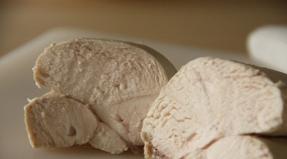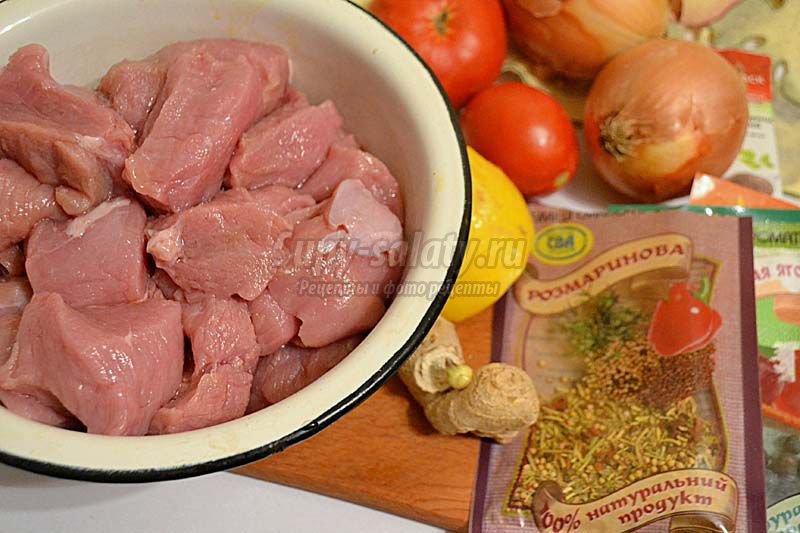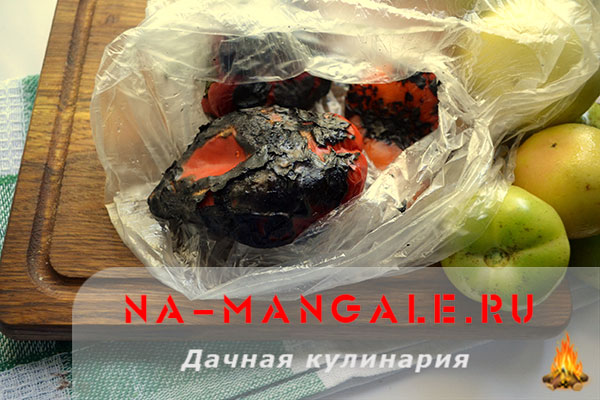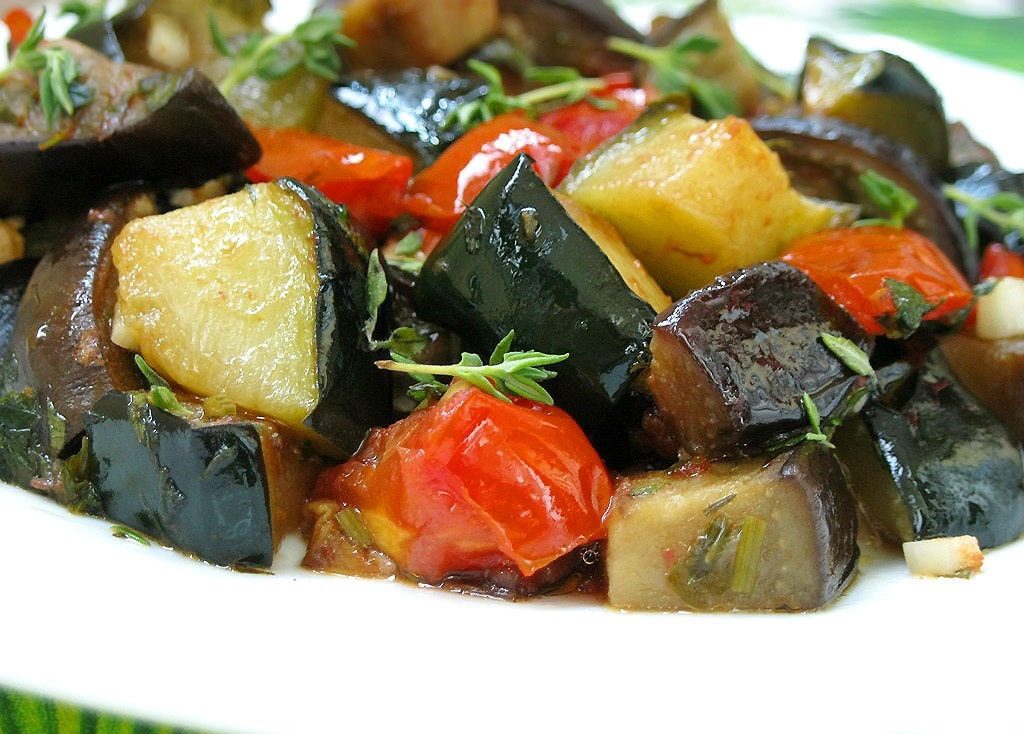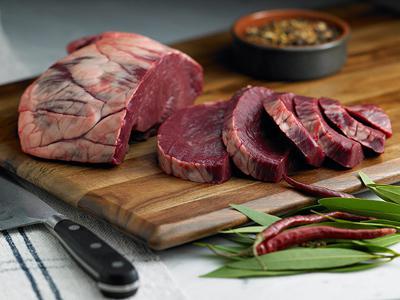Italian lasagna recipe. Real Italian Lasagna
Lasagna is one of the popular dishes of Italian cuisine, which is able to win the love of any inhabitant of our planet from the first piece. Modern lasagna is a few layers of dried, and then cooked or baked wheat dough, interspersed with a variety of fillings - from ground meat to vegetable or mushroom stew, the dish is sprinkled with grated cheese and baked in the oven.
But such lasagna was not always. The ancestor of lasagna was a flat round cake made from wheat bread. This cake was baked by the Greeks and called it laganon. The Romans, who later adopted their bread from the Greeks, began to cut it into strips and call it lagani, i.e. laganon in the plural. Until now, in some regions of Italy (Calabria, for example), a wide flat paste, known worldwide as tagliatelle, and the name is Lagana. According to another etymological version, the word "lasagna" comes from the Greek lasanon, which means "pot-type stove". The Romans (again!) Borrowed this word, turning it into lasanum, which was called the actual dish, in which the "ancestors" of lasagne were prepared. Gradually, the name of the dishes passed on to the dish itself. This is how “lasagna” was born.
And although today it is believed that the lasagna is a true Italian, the British and even the Scandinavians are trying to defend her pedigree! A version of English origin is based on the fact that a similar dish “loseyns” (pronounced “lasagne”) existed at the court of King Richard II as early as the 14th century. The British claim that the original lasana recipe can be found in one of the first English cookbooks - “Forme of Cury”, which is stored in the British Museum. Such a bold and arrogant statement hurt the Italians for a living, the Italian embassy in London even hurried to make a statement: "Regardless of what this ancient English dish was called, but it certainly was not the kind of lasagne that we make." Yes, the Italians are very jealous when it comes to national cuisine ... True, they almost did not react to the Scandinavians when they heard the story about the times of the Vikings, from whose kitchen the modern “langkake” dish, which is really very similar to lasagna - it consists of bread cakes, sandwiched with meat sauce and cheese. Apparently, we should not pay attention to this version either.
The first documented Italian lasagna recipe was found in an anonymous 14th century manuscript found in the vicinity of Naples. The manuscript was named Liber de coquina (Culinary Book). According to this recipe, in the Middle Ages, lasagne was prepared as follows: boiled dough sheets in boiling water, sandwich them with ground spices and grated cheese. Under the spices most likely meant salt, pepper and sugar, but perhaps a combination of cinnamon, cloves, nutmeg and saffron. By that time, medieval Italians were familiar with these seasonings, at least as stated in A. Clifford Wright's Lasagna (Clifford A. Wright, Lasagne, Boston: Little, Brown, 1995).
One of the greatest fans of lasagna of all time is the magnificent Garfield, the fictional cat of popular American comics. Let's try to cook his favorite dish?
Lasagna Garfield
Ingredients:
2 cups ricotta, 0.5 cups grated parmesan, 1 scrambled egg, 1/4 cup chopped fresh basil, 230 g lasagne sheets, 230 g grated mozzarella, salt and pepper powder to taste.
For the sauce:
1.75 cups of tomato puree, 2 tbsp. olive oil, 2 tbsp. oregano, 0.5 cups of chopped vegetables and mushrooms (onions, spinach, mushrooms, etc.).
Cooking:
Combine ricotta, parmesan, egg and basil in a large bowl, season with salt and pepper.
Heat oven to 190C. Grease the baking dish 33 cm by 22 cm. Lay the boiled lasagna sheets in an even layer on the bottom, but not overlapped. Cover with half the cheese mixture. Put a portion of the sauce on top, which is prepared by mixing all the ingredients for the sauce. Cover with grated mozzarella on top. Repeat the layers in the order shown and finish with a layer of noodles, which are slightly greased with the sauce. Bake for 20 minutes.
Most often, such varieties of cheese as ricotta and mozzarella are used for lasagna, but only Parmesan is used in classic lasagna bolognese. Often the dish is prepared with bechamel sauce.
Lasagna bolognese
Ingredients for bolognese sauce:
2 tbsp. butter, 1 tbsp. L. Olive oil, 3 slices of bacon, chopped, 3 UF. chopped prosciutto, 1 onion, chopped, 2 small carrots, chopped, 2 celery stalks, chopped, 230 g of ground beef, 230 g of veal minced meat, 100 g of minced meat, 1 cup of chicken broth, 1 glass of white wine, 2 glasses of chopped tomatoes, 1 clove, 1/4 tsp. grated nutmeg, 2 cups hot water, 340 g chopped mushrooms, 2 chicken livers, 1/4 cup chopped parsley, 0.5 cups heavy cream, salt, ground pepper to taste.
Ingredients:
3 tbsp. butter, 3 tbsp. flour, 2 cups warm milk, 450 g of sheets for lasagna, 1 cup grated parmesan.
Cooking:
Prepare bolognaise sauce, it can be done in advance, in 2-3 days, the sauce is perfectly frozen. To do this, melt the butter together with the olive oil in a large deep frying pan, fry the chopped bacon, add the prosciutto. Cook for 1 minute, reduce heat to low, add onions, carrots, celery and cook until soft vegetables. Then add the fire and add the stuffing vegetables. Cook with constant stirring until the meat is cooked. Add broth and wine, cook until thick, about 10 minutes. Add tomatoes, cloves, nutmeg and hot water. Reduce heat, cook loosely covered with a lid for about 45 minutes, stirring occasionally. 5 minutes until cooked, add mushrooms, chicken liver and parsley. Then cream, heat, season with salt and pepper to taste.
For bechamel sauce, melt the butter in a saucepan. When the butter has melted, add flour, stirring well. Keep on fire until the mass begins to bubble, but does not get a brown tint. Gradually add the milk, still stirring, so that no lumps form. Cook over low heat until thick, stirring with a wooden spoon.
Boil the lasagna sheets in a large amount of boiling water. When the paste reaches the al dente readiness, remove from heat, pour out water, and spread the lasagna sheets on a damp, clean towel.
Heat oven to 200 ° C. Grease a little more than 5 cm deep baking dish with butter, lay a layer of lasagna sheets, put a thick layer of meat sauce, a little bechamel sauce, and grated parmesan. Repeat the layers in the specified order, the last layer - bechamel, sprinkled with melted butter. Bake for 20-30 minutes until golden brown. Allow the lasagne to cool at room temperature for about 10 minutes before serving.
Italian lasagna is an extraordinary dish, no one can resist it, in any case, I have never met such people. All my guests are always delighted, and even those who are on a diet are asking for supplements. For the basis we take ready sheets of lasagna, you can use pork, beef, or take a mixed version as minced meat. Be sure to take the tomato sauce, tomatoes, vegetables, cheese, and, of course, bechamel sauce. Serve lasagna to the table with fresh vegetables and herbs.
Prepare the ingredients.
Prepare vegetables beforehand, peel everything and wash, dry. Sweet pepper to remove from the seeds and cut into small pieces. Also chop celery stalks.

Carrots and onions, too, cut into small cubes.

Warm up some vegetable oil in a frying pan, put all the vegetables in a frying pan, fry for 3-5 minutes.

To the fried vegetables add the prepared stuffing. Rinse and dry the tomatoes, cut into small cubes, add to the pan. Fry minced meat and vegetables for 10 minutes.

Pour tomato sauce into the pan. Simmer everything for about 12 minutes, season the sauce with salt and pepper, squeeze a clove of garlic.

Cook bechamel. In a saucepan or sauté pan, melt the butter, add wheat flour, and mix. Pour milk into the pan in a thin stream. Boil the sauce until thick.

Put a pinch of pepper, a little ground nutmeg in the sauce.

Prepare a form for lasagna, pour a little sauce at the bottom, put a few sheets of lasagna. Pre-read on the packaging, whether to pre-boil sheets.

On top of the sheets distribute a portion of bolognese - prepared minced meat in tomato sauce.

Trout the meat layer with cheese chips.

Cover all with two sheets of lasagna, cover them with a portion of bechamel sauce.

Repeat layers 3-4 times. Rearrange the form in the oven for 45-50 minutes, set the temperature to 180 degrees. Ready Italian lasagna to serve.

Good appetite!


Lasagna is a quick, simple and tasty dish. Learn how to cook it for real: a delicate creamy sauce mixed with spicy tomato sauce and you get real Italian magic. And this is a fairly quick dish: read for a long time, but to do it quickly. Let's try?
So, prepare Italian lasagna.
We will need the following products.
For bechamel sauce:
- 75 g butter
- 75 g wheat flour
- 1 liter whole milk at room temperature
- 1 teaspoon fresh nutmeg nutmeg
- 375 ml of tomato sauce
- Salt and white pepper
For lasagna
- 60 ml of olive oil
- 500g ground beef
- Salt and pepper
- 750g ricotta cheese
- 30g butter
- 3 large eggs
- 500 g lasagna sheets prepared al dente (i.e. welded to semi-ready)
- 600 g frozen chopped spinach (pre-thaw and squeeze out)
- 300g grated mozzarella cheese
- 25 grams of grated parmesan cheese
Tomato sauce
- 120 ml of olive oil
- 1 small onion, finely chopped
- 2 cloves of garlic, also chopped
- 1 celery stalk, chopped
- 1 carrot, chopped or grated
- sea salt and freshly ground black pepper
- 900 g canned shredded tomatoes
- 2 dry bay leaves
- 60g butter, on request
In this video, the process is shown briefly and clearly:
Well, now everything is detailed:
Cooking bechamel sauce:
1) In a 2-liter saucepan, put 75g of butter and melt over medium heat. When the butter is completely melted, add flour and blend until smooth, about 2 minutes.
2) Gradually add milk, whipping constantly to prevent the formation of lumps. Continue to boil and stir over medium heat until the sauce thickens, becomes smooth and creamy, about 10 minutes. The sauce should be thick enough, gently drain from the spoon.
3) Turn off the hob and add nutmeg and tomato sauce. Stir, set aside and allow to cool completely.
Making tomato sauce:
1) In a deep frying pan, heat the oil over medium heat. Add onions and garlic, fry until soft and translucent in color, about 5 to 10 minutes. Add celery and carrots, season with salt and pepper. Pass until all the vegetables are soft, about 5 to 10 minutes.
2) Add tomatoes and bay leaves, simmer without a lid over low heat for 1 hour to a fairly thick state. Remove bay leaf and check for taste. If the sauce seems sour, add 15 g unsalted butter.
3) Beat the blender or food processor into a puree state.
Tip: Prepare a double portion of the sauce, let it cool completely and pour half into the container, freeze in the freezer. It can be stored there for up to 6 months to 6 months.
Cooking lasagna:
- Preheat oven to 190 degrees C.
- In a saucepan with a thick bottom, heat the olive oil. Fry the mince, add salt and pepper, avoiding any large lumps, until it ceases to be pink. Remove from heat and drain excess fat. Set aside and allow to cool completely.
- In a medium sized bowl, mix all the ricote and egg thoroughly. Season with salt and pepper. Set aside.
- Put 1/3 of béchamel sauce on the form. Lay the lasagna sheets evenly, side by side. Spread a layer of the whole cheese-egg mixture evenly and then a layer of spinach. Put another layer of pasta sheets. On top of it - all ground beef.
- Sprinkle 1/2 mozzarella cheese on top of beef. Pour another 1/3 of the bechamel sauce. Arrange the final layer of lasagna sheets. Above - the rest of bechamel sauce, mozzarella and parmesan.
- Cut the remaining 30 g of butter into 0.5 cm cube and distribute them along the lasagna.
- Cover the pan with the lasagna, set on a medium level oven and bake for about 30 minutes. Remove the lid and continue to bake for about 15 minutes.
Serve ready lasagna to the table directly in the form in which it was baked. Feel the scent of Italy? Turn on your favorite Italian melody - and enjoy!
Italian lasagna - perhaps one of those dishes that every hostess should be able to cook. This mix of dough, meat and cheese will saturate the whole family in one fell swoop! But there is one "but": we often prepare lasagna from special sheets of dough, which are sold in the store in whole packs. But the Italians do not recognize these sheets - they call it “an option for the lazy!”
Therefore, if you have several free hours at your disposal, try devoting them to cooking from scratch - with the creation of real egg dough, bolognese sauces and bechamel. We will tell you about all these subtleties now.
Ingredients:
- Hard cheese like Dutch - 300 g
For the test:
- Eggs - 3 pcs.
- Flour - 400 g
- Salt - Pinch
For the bolognese sauce:
- Vegetable oil - 2 tbsp.
- Minced meat (veal or beef) - 500 g
- Onions - 1 pc.
- Garlic - 2 cloves
- Tomato juice (or diluted tomato paste) - 300 ml
- Salt - 0.5 st.l.
- Ground black pepper - to taste
- Dried basil - to taste
For bechamel sauce:
- Butter - 50 g
- Milk - 200 ml
- Flour - 3 tbsp.
- Salt - Pinch
Also, you will need: a baking dish with high sides, some vegetable oil for lubricating the form and a whisk.
Italian Lasagna - a recipe

Usually, lasagna is cooked with bolognese meat sauce: it is stewed long enough. If you already have minced meat, put the pan on the fire and pour vegetable oil on its bottom. When it warms up, put the minced meat in a pan.

Clean onions, wash well and cut into cubes. Put the onion in the pan and mix with the minced meat.

Peel the garlic and pass it through the garlic so that minced garlic mashed potatoes are added to the mincemeat. In European recipes, it is often recommended not to chop the garlic, but simply to crush the teeth with a wide knife, so that the garlic starts to produce juice. But in this case, the crushed cloves will then have to be fished out of the prepared sauce (and, otherwise, they will be fished out of their plate, which is not entirely aesthetic).

Mix the minced meat well with vegetables, salt it and cover with tomato juice. Cover the pan with a lid and simmer the bolognese sauce for an hour.

At the end of stewing, add chopped dried basil and pepper to the sauce.

While the sauce is stewing, you can cook egg dough for lasagna. Actually, this dough is suitable for any kind of Italian “pasta” - pasta like cannelloni, farfalle or spaghetti. Pour 2 cups of flour in a bowl and make a large depression in the middle of this slide. Break all 3 eggs into this well and add a pinch of salt.

Fork all the yolks and gently begin to stir the eggs into a homogeneous mass. Gradually mix in the eggs and flour from all sides.

After kneading all the flour with the eggs, set the fork aside and knead the dough with your hands for at least 15 minutes. Here you will need to add additional flour to the dough - until the dough turns into an elastic bun, which does not stick to the hands. In this form, the dough should be put in a bag or wrapped with cling film and put in a refrigerator for 30-60 minutes.

While the dough settles in the cold, and the meat sauce finishes stewing (or is already cooling), prepare the remaining components of the lasagna. Rub the cheese on a fine grater and leave aside.

Cook bechamel sauce. To do this, put a piece of butter in the pan and melt it completely. It is very important that throughout the cooking of the sauce the fire is small - otherwise the ingredients will sink or burn.

If the butter has already completely melted, add flour to the pan and immediately stir in a circular motion with the butter. The fat will immediately “disappear” somewhere, and you will see dryish flour lumps in the pan.

At this stage, you can start adding milk to the sauce little by little and immediately knead it with the rest of the ingredients. Salt the sauce and add as much milk to make it thick, but without lumps. If your sauce has turned out lumps, continue kneading it: from the heat and kneading the lumps should disappear. Bechamel is ready - now let it cool slightly!

Remove the dough from the refrigerator and, well sprinkled with flour, thinly thinly roll it out. Rolled dough should be enlightened.

Cut out 4 sheets of dough for (the size that is needed for your baking mold). Grease the form with vegetable oil and place the first sheet of dough on its bottom.

The dough remaining after cutting the desired sheets, you can twist the roll and chop finely. The result is noodles, which can be dried in an open oven and later used as regular pasta. Just do not feel sorry for the flour - sprinkle pasta with it so that they do not stick together!
Despite the fact that lasagna is popular all over the world, not every housewife knows how to cook Italian lasagna. This is an incredibly tasty dish of thin sheets of dough, alternating fillings. From above the dish is poured with sauce and sprinkled with grated cheese. The principle of cooking lasagna gives a free space to the culinary fan. Stuffings can be made from different products, you can experiment with the composition of the sauce.
Pasta is the dough for the dish. It can be bought ready-made in the store, and you can, and better, cook at home with your own hands. Cooking lasagna takes time, patience and a good mood.
Here is a recipe for traditional Italian lasagna.
 Lasagna is a hearty aromatic dish that is impossible not to love. A variety of toppings, fine pasta, savory cheese and greens - all together gives a divine taste of Italian lasagna.
Lasagna is a hearty aromatic dish that is impossible not to love. A variety of toppings, fine pasta, savory cheese and greens - all together gives a divine taste of Italian lasagna.
We will prepare it in four stages. But before that, we put 300 grams of parmesan on a fine grater.
Lasagna Sheets - Pasta
Paste will require 65 g of wheat flour, 50 g of semolina, one glass of milk, one chicken egg, a pinch of salt.
We combine all the components, knead the dough, cover it with a towel and let stand a little. Then roll out the thickness of not more than 3 mm. Cut into squares considering the size of the form for the dish. Boil the dough in salted water, where add a little olive oil, so that the sheets do not stick together. We take them out of the water, dry them.
If you use ready-made pasta sheets, in some cases they do not need to be boiled. Look at the instructions on the package.
Cooking Bolognese Meat Sauce
This will require:
- 700 g of minced meat. It will be juicier if you take in half pork and beef. It should not be lean;
- 4 medium sized fresh or pickled tomatoes;
- 2 cloves of garlic;
- a few sprigs of basil and parsley;
- spices - salt, ground black pepper
With tomatoes, remove the skin. To do this, we wash them, make 4 cuts on the crown and lower them for a few seconds in boiling water. The peel is well separated. Cook mashed potatoes in a blender. Finely chop the onion, skip the garlic through the crush, wash the greens, dry and chop finely.
In a deep frying pan, heat the olive oil, fry in it until golden brown onions and for the aroma a little garlic. Add the minced meat and fry it for 5 minutes while constantly stirring and kneading the lumps. Pour tomato puree, salt and pepper, and simmer under cover with low heat for 10 minutes. After removing from the heat, add the herbs and garlic residues to the sauce, then let it sit under the lid.
Prepare the bechamel sauce
Products:
- 800 ml of milk
- 100 g butter
- 4 tbsp. l flour
- spice
To cook bechamel, you must first melt the butter in a saucepan, add flour and mix until smooth. Remove container from heat and allow to cool slightly. Then pour in the milk and cook, stirring constantly for 10 minutes. Stir thoroughly so that there are no lumps. It is important. Then add salt, pepper and a little nutmeg. The sauce is ready.
Well, the cooking process itself
We put lasagna in shape. All ingredients are divided into 4 parts. Put the bolognese sauce on the bottom of the form, pour the bechamel sauce on top so that the bottom of the form is closed. Put the pasta sheets. Then again put the meat sauce, bechamel and sprinkle with grated parmesan cheese on top. We cover everything again with dough. Layers alternate until we use all the ingredients. Top the sheets of lasagna, pour over the bechamel sauce and sprinkle with cheese.
Bake in the oven at 180 ° C for 40 minutes.
The principle of making such a layered juicy cake is the foundation. For those who follow the figure, or are not fond of meat, fatty minced meat can be replaced with mushrooms and vegetables. Tell you how to cook vegetable lasagna.
 Required Products:
Required Products:
- champignons or oyster mushrooms - 300 g
- eggplants - 600 g
- 1 medium carrot
- 1 bell pepper
- 2 onions
- 3-4 canned tomatoes
- 200 g grated parmesan
- 100 g of celery
- on a pinch of thyme and oregano
- 250 g sheets of dough
- 50 g of flour and butter
- 3 cups milk
How to cook the filling:
In one pan simmer tomatoes and herbs for 10-15 minutes. First, peel the tomatoes and grind them into mashed potatoes. Pour 30 g of olive oil into another pan and add the finely chopped carrots, one onion, bell pepper and celery.
Separately, fry eggplant slices in vegetable oil. Stew mushrooms with the rest of onions too.
Cooking bechamel. In a pan fry the flour in butter. Fill the milk and cook, stirring for 3 minutes. Add salt and pepper.
We collect lasagna. Pour bechamel at the bottom of the mold, put the dough sheets, pour the white sauce over the top again. Put layers of eggplants, mushrooms, tomato sauce. Cover with dough, pour it over with bechamel sauce and repeat the layers of the filling again. So alternate until the filling is over. Grease the top plates with milk sauce and sprinkle with grated cheese. We bake lasagna for half an hour at a temperature of 180 C.
There are many variations on the theme of lasagna. There is a recipe where milk sauce is replaced with soft mozzarella cheese and cream, egg and parmesan filling, and boiled ham is added to the minced meat. But in any lasagna recipe - a lot of greens, tomatoes and spices. The principle of puff pie baked with sauce and cheese always remains unchanged.
What you need to remember when cooking lasagna
- Sheets of dough must be dried so that the dish is not raw
- Use tomato sauce or peeled tomatoes.
- The top layer is always dough, smeared with sauce and sprinkled with grated cheese. Then a ruddy crust forms on top.
- The form must be deep so that the filling does not flow out.
